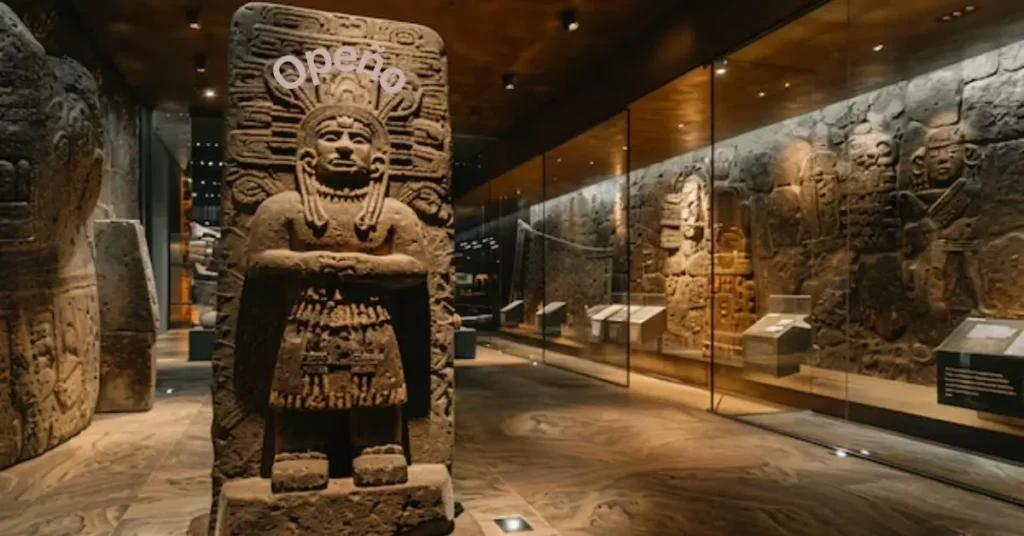Opeño is a significant Mesoamerican archaeological site located in the state of Michoacán, Mexico. It is widely recognized for its rich pre-Hispanic ceramic material that dates back to the Late Preclassic period, around 1600 BCE. The site, particularly known for its ancient tombs, has intrigued archaeologists and historians alike, offering valuable insights into the early cultures of the region and raising questions about their connections to the Olmec civilization.
Historical Background and Significance
Opeño holds a pivotal place in the study of Mesoamerican history. The discovery of the site’s oldest tombs, which are believed to be among the earliest examples of shaft tombs in Mesoamerica, provides a crucial link to understanding the burial practices and socio-cultural dynamics of the time. The tombs, dating back to 1600 BCE, predate many other well-known Mesoamerican sites, suggesting that the region had a complex and developed culture much earlier than previously thought.
The ceramic material found at Opeño is particularly significant. These ceramics, characterized by their unique styles and designs, offer a glimpse into the artistic and cultural expressions of the people who lived in the region during the Late Preclassic period. The ceramics also serve as a key indicator of the technological advancements of the time, showcasing the community’s ability to produce intricate and durable objects.
The Cultural Context: Olmec Influence and Local Civilizations
One of the most fascinating aspects of Opeño is the potential connection to the Olmec culture, often regarded as the “mother culture” of Mesoamerica. The Olmecs, who flourished between 1500 and 400 BCE, are known for their monumental architecture, sophisticated art, and complex societal structures. The similarities between the artifacts found at Opeño and those associated with the Olmecs have led scholars to speculate about the nature of the interactions between these two cultures.
However, the influence of the Olmec culture on Opeño is still a subject of debate. While some researchers suggest that Opeño might have been part of a broader Olmec cultural sphere, others argue that the site represents a distinct regional development with its own unique characteristics. Further analysis of the site’s architecture, artifacts, and burial practices is needed to clarify the extent of Olmec influence on Opeño.
Jacona: The Cultural Melting Pot of Michoacán
Opeño’s proximity to the city of Jacona adds another layer of historical and cultural significance to the region. Jacona, a city in Michoacán, is rich in history and cultural diversity, with its name believed to have originated from the Tecuexe, a Great Chichimeca civilization. The Tecuexe language, part of the Uto-Aztecan language family, reflects the deep-rooted connections between the various indigenous groups that have inhabited the region.
Jacona’s diverse population has included the Chichimeca, Tecuexe, Purépecha, and Capacha cultures. Each of these groups has contributed to the region’s rich cultural tapestry, leaving behind a legacy of traditions, languages, and practices that continue to influence the area to this day.
The Purépecha people, in particular, have played a central role in the history of Michoacán. Centered in the northwestern region of the state, the Purépecha developed a sophisticated civilization known for its advanced metallurgy, unique architectural styles, and complex social organization. Their influence is still evident in the region, both in terms of cultural heritage and the continued presence of Purépecha communities.
The Capacha culture, another significant group in the region, was discovered in 1939 and is considered one of the first cultures with complex traits in the area. The Capacha culture’s contributions to the region’s development, particularly in terms of ceramics and other material culture, have helped to shape the historical narrative of Michoacán.
The Founding of Jacona and Its Historical Importance
Jacona was founded in 1555 by Augustinian friars, during the early period of Spanish colonization in Mexico. The city’s foundation marked the beginning of a new era in the region, as it became a focal point for the spread of Christianity and Spanish culture. The city’s strategic location, just 16 kilometers from the old pre-Hispanic town, made it an important hub for trade, agriculture, and cultural exchange.
The founding of Jacona in a Chichimeca region, on the border of the Purépecha kingdom, reflects the complex interactions between different indigenous groups and the Spanish colonizers. The region’s diverse cultural landscape, with its mix of Chichimeca, Purépecha, and other indigenous influences, created a unique environment where different traditions and practices could coexist and evolve.
Opeño’s Architectural and Cultural Legacy
The architecture of Opeño is one of its most distinguishing features. The site’s unique characteristics, including its burial complexes and ceremonial structures, offer valuable insights into the architectural practices of the time. The layout of the site, with its carefully planned tombs and ceremonial areas, suggests a high level of social organization and a deep understanding of spatial design.
The burial practices at Opeño are particularly noteworthy. The use of shaft tombs, where the dead were buried in deep, vertical shafts often accompanied by rich grave goods, reflects a complex belief system and a high degree of ritualization in funerary practices. These tombs, which are among the earliest examples of their kind in Mesoamerica, provide crucial evidence of the social and religious structures of the community.
The ceramics and other artifacts found in the tombs further emphasize the cultural richness of Opeño. The intricate designs and motifs on the ceramics, along with the presence of other grave goods such as jewelry and tools, suggest that the people of Opeño had a well-developed aesthetic sense and placed great importance on the afterlife.
The Need for Further Analysis and Research
Despite the wealth of information that has already been uncovered at Opeño, much remains to be explored and understood. The site’s connections to other Mesoamerican cultures, particularly the Olmecs, continue to be a topic of debate among scholars. Further archaeological research, including more detailed analysis of the site’s architecture, artifacts, and burial practices, is needed to gain a deeper understanding of the cultural dynamics at play.
Additionally, the relationship between Opeño and other nearby sites, such as Jacona, offers a valuable opportunity for comparative studies. By examining the similarities and differences between these sites, researchers can gain new insights into the broader cultural landscape of Michoacán during the Late Preclassic period.
Conclusion
Opeño stands as a testament to the rich and complex history of Mesoamerica. Its ancient tombs, intricate ceramics, and unique architectural features provide a window into a world that existed long before the rise of the more well-known Mesoamerican civilizations. The site’s potential connections to the Olmec culture, along with its proximity to the culturally diverse city of Jacona, make it an important focal point for the study of early Mesoamerican history.
As research at Opeño continues, it is likely that new discoveries will shed light on the mysteries of this ancient site and its place in the broader narrative of Mesoamerican history. Whether as a center of early cultural development or as part of a larger network of interconnected societies, Opeño’s legacy will continue to influence our understanding of the ancient world for years to come.







